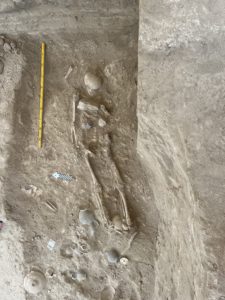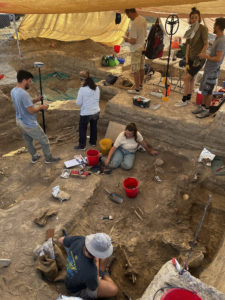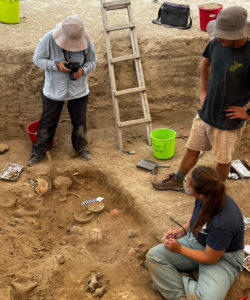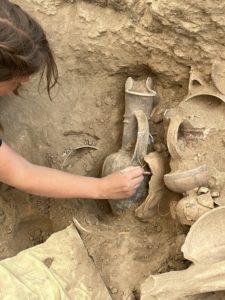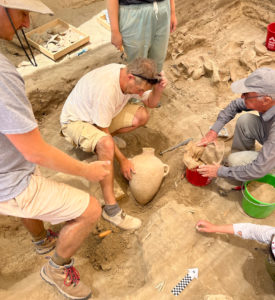At the end of the 2023 campaign (June 2023), the Department of Antiquities of Cyprus received the mandatory report:
http://www.mcw.gov.cy/mcw/da/da.nsf/All/C8FF86C38B382F40422578EA003B5BED?OpenDocument
Excavations
at
Hala Sultan Tekke
(The Söderberg Expedition)
Introduction
In May and June 2023, an international team headed by Professor Peter M. Fischer from the University of Gothenburg, Sweden, and assisted by Dr Rainer Feldbacher, carried out excavations at the Late Cypriot harbour city of Dromolaxia-Vyzakia / Hala Sultan Tekke. Parallel with and after the excavations, another group of the Swedish team, supervised by Dr Teresa Bürge processed the finds from previous excavations kept at the storerooms of the Archaeological Museum of the Larnaka District. The Swedish team was assisted by bioarchaeologist Yuko Miyauchi, PhD student of Professor Kirsi Lorentz (Cyprus Institute), and Professor Sorin Hermon and his team (also from the Cyprus Institute). The teams of the Cyprus Institute provided expertise for the excavation and recording of the human remains, and 2D and 3D presentations of objects in addition to material analyses. As in 2022, Andreani Papageorgiou and Christodoulos Sofokleous functioned as the expedition’s surveyors. As in all previous seasons, Dina and Petros Georgiou were responsible for the basic logistics. The team was supported by students of the Archaeological Research Unit (ARU, directed by V. Kassianidou).
If not otherwise stated, all photographs are by L. Avial Chicharro and P.M. Fischer.
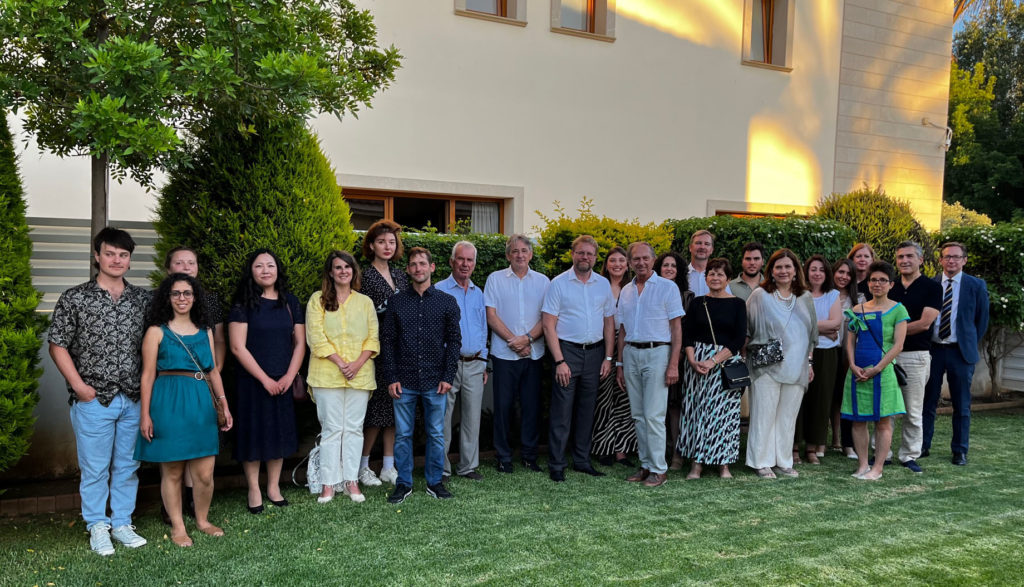
The 2023 team at the residency of the Swedish ambassador H.E. Martin Hagström
Excavations in Area A (cemetery)
Guided by the previously carried out geophysical surveys, excavations concentrated on Area A which is the city’s cemetery. The cemetery is threatened by farming, erosion and, as a consequence, impending looting. In addition to complementary excavations of Tomb UU and an enigmatic pit (Pit WW) three chamber tombs, partly affected by modern farming, were exposed.
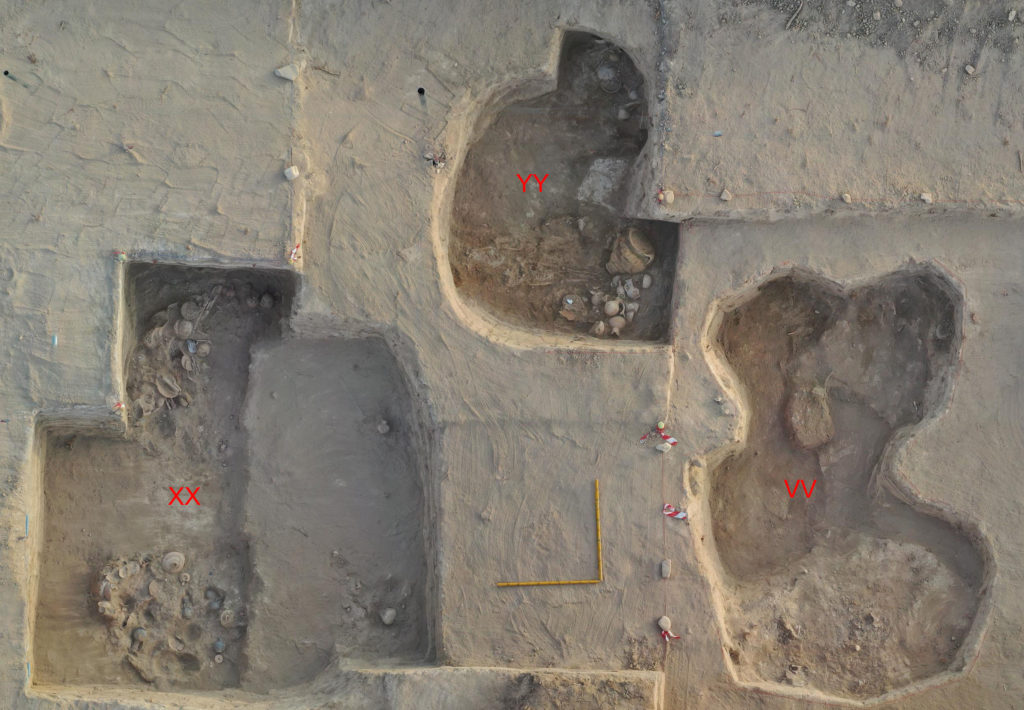
Mid-season 2023: Drone orthophoto of Chamber Tombs XX, YY, VV (photograph A. Papageorgiou)
Chamber Tomb UU
Complementary excavations were carried out in Tomb UU which was discovered and partly excavated in 2022 (see website 2022). The results confirmed the conclusions from 2022, viz. the tomb was in use mainly during the 14th century BCE.
Chamber Tomb VV
This chamber tomb had been opened up in the past, most likely in the 19th century CE. Although the “excavators” destroyed many objects and human remains, several items and scattered human bones could be saved and have thoroughly been taken care of. These items comprise adornments and imported pottery (mainly sherds) from the Mycenaean sphere of culture but also from Egypt, Anatolia, and Mesopotamia.
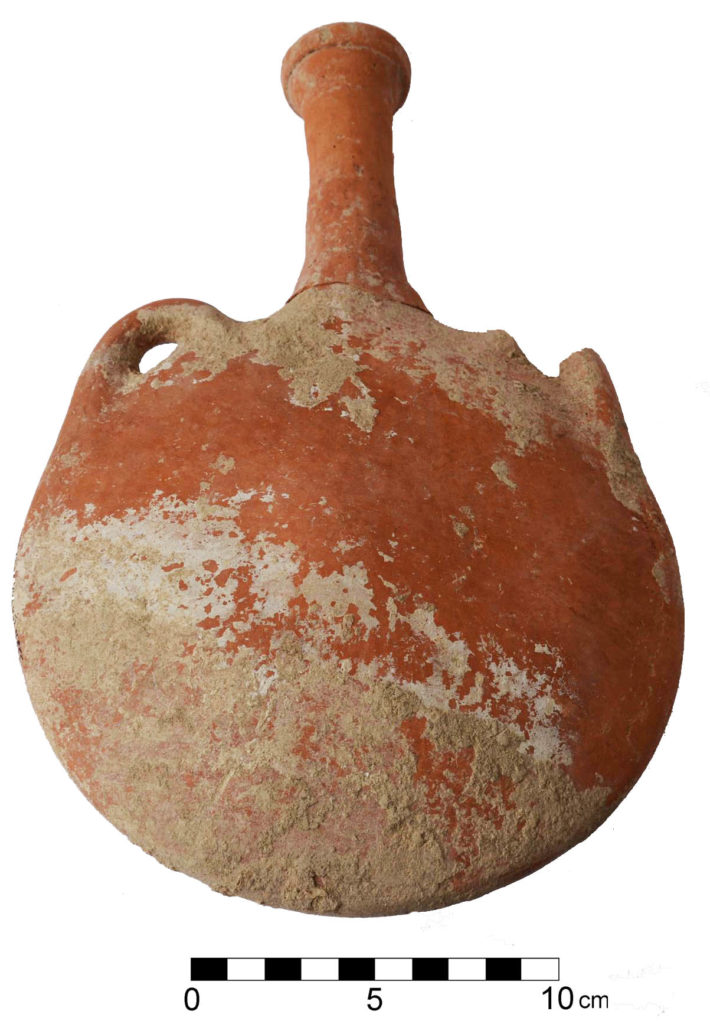
Tomb VV: Anatolian Red Lustrous Wheel-made
Pit WW
This enigmatic circular pit with a diameter of approximately 2.75 m contained numerous large boulders but no other finds except for a few Late Cypriot sherds. The pit’s precise function could not be revealed, but it may represent a storage area for building materials or the boulders were eventually used as tomb markers. No doubt, these stones were transported to Pit WW since they do not belong to the site’s geological features.
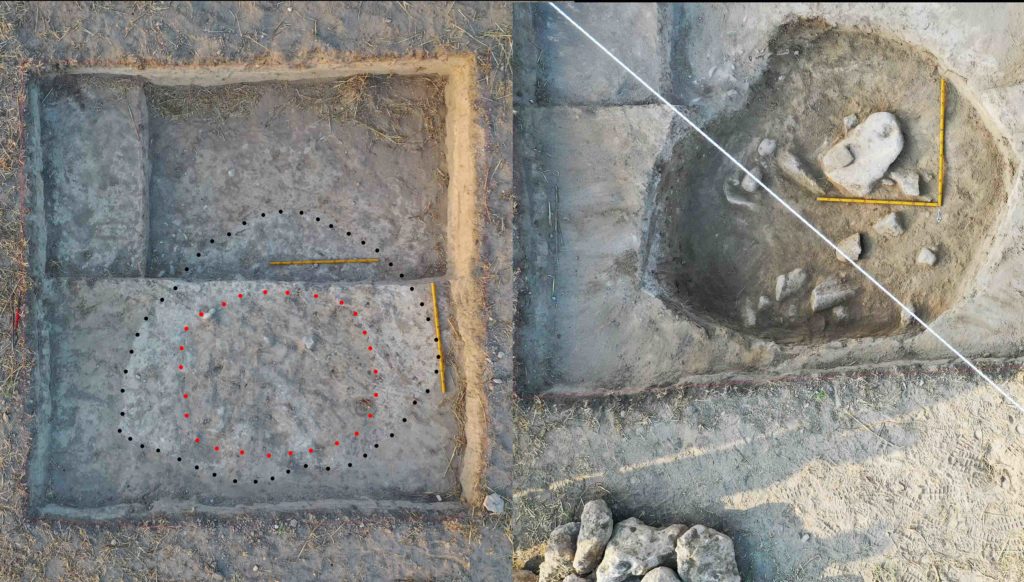
Drone photographs of Pit WW looking south; left: below colluvial soil, right: during excavation (observe the removed boulders in the lower part of the photograph)
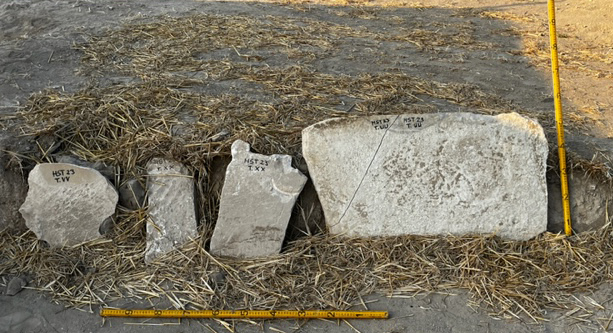
Area A: Tomb markers
Chamber Tombs XX and YY
Two other chamber tombs (Tombs XX and YY) close to Chamber Tomb VV were undisturbed, let alone the collapse of the chambers already in antiquity. In all probability, judging by the nature of the finds and their specific contexts, these tombs are the most important excavated in the area. In addition to locally produced pottery, the tombs contained numerous imported items. The majority of the imports, mainly pottery, came from the Mycenaean sphere of culture including Crete. There are, for instance, Mycenaean figurines of the Phi- and Psi-types and animal figurines. One depicts a bovine managed by an individual.
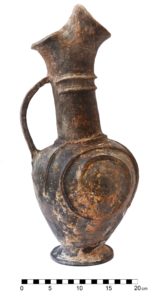
Tomb XX: Base-ring I jug
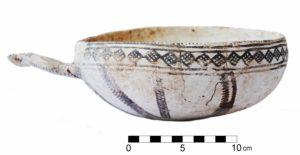
Tomb XX: WS II (early)
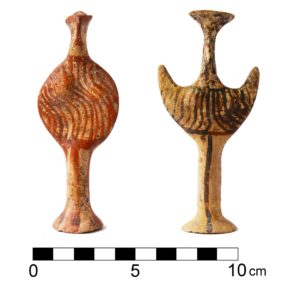
Tomb XX: Mycenaean Phi- and Psi-figurines
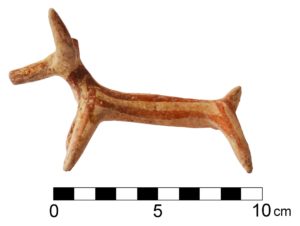
Tomb XX: Mycenaean bovine figurine
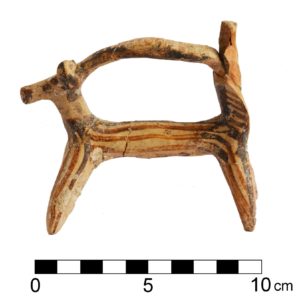
Tomb YY: Mycenaean bovine & rider figurine
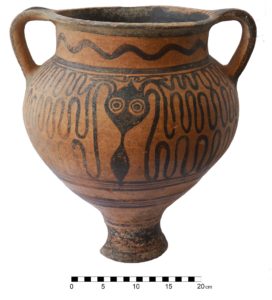
Tomb XX: Minoan Octopus Krater
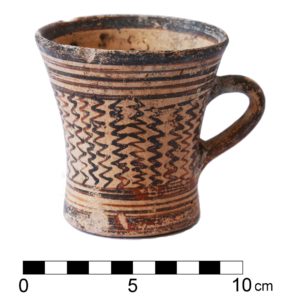
Tomb XX: Mycenaean mug
Other imports arrived from Anatolia, Egypt, the Levant and cultures further east and north. There were, for instance, several items of amber, most likely from the Baltic Sea. One object of amber is in the shape of a scarab. Other stones comprise the blue-coloured lapis lazuli from Afghanistan and the dark-red carnelian from India. There are adornments, cylinder seals of haematite, and daggers, knives, spearheads, and a mirror of bronze, the latter most likely of Mycenaean provenance. Several items were of ivory and faience, obviously imported from Egypt during the second half of the 18th Dynasty which among other rulers saw the pharaohs Amenophis III, Amenophis IV (Akhenaten) and his wife Nefertiti, and Tutankhamun.
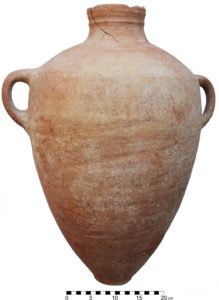
Tomb XX: Canaanite jar
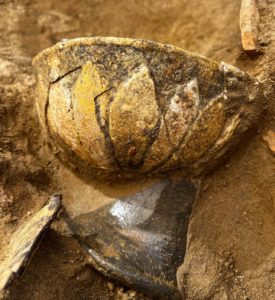
Tomb XX: Egyptian multi-coloured faience bowl in situ
Chronology of VV, XX and YY
In accordance with the local pottery, and the Mycenaean and Egyptian objects, these three tombs are preliminarily dated to the 14th century BCE.
Bioarchaeology
The study of the skeletal remains is ongoing. Therefore, the estimation of the number of individuals, their gender, age at death, indications of diseases and trauma have to await further investigations. New-born, infants and young and “old” adults were found associated with numerous burial gifts. “Old” should be understood as individuals rarely exceeding 40 years of age, i.e., the average lifespan was quite low in this period.
aDNA and Sr-isotope research are in progress.
Summary
In 2023, the safeguarding, excavation, and recording of exposed tombs in the city’s cemetery were of the highest importance. These tombs, many of which could be saved from destruction by farming and looting, represent an excellent complement to the stratigraphy of the city.
The nature of the finds points to far-reaching trade and further underlines the role of the city as a trading metropolis in the Mediterranean economic system. There are unequivocal cultural and economic connections between the city and a large geographical area including the Mycenaean/Minoan, Hittite, Levantine, and Egyptian spheres of culture but also cultures as far away as Sardinia and Mesopotamia. According to the Mycenaean pottery, there seems to be a specific connection to Tiryns.
Certain find contexts provide valuable information about the complex mortuary customs in the Late Cypriot period (postdoc studies by T. Bürge). The numerous human remains offer excellent material for research at the Cyprus Institute (supervised by K. Lorentz). Material analyses and 2D and 3D representation add to the research topics coordinated by S. Hermon. A number of students of the Archaeological Research Unit (ARU) in Nicosia (dir. V. Kassianidou) participated in the excavations to gain experience in field archaeology.
Acknowledgements
The expedition is much obliged to the personnel of the Department of Antiquities of Cyprus, H.E. Martin Hagström, Ambassador of Sweden in Nicosia, the Cyprus Institute, and the Archaeological Research Unit for all support. Our sincere thanks go to the following foundations and academies: the fieldwork was mainly sponsored by the Torsten Söderberg Foundation and the Royal Swedish Academy of History and Antiquities in Stockholm (Enbom foundation). Funds for additional research came from INSTAP (many thanks to M.H. Wiener) and the Royal Society of Arts and Sciences in Gothenburg (KVVS; Adlerbert Research Foundation).
Photographs from the field
